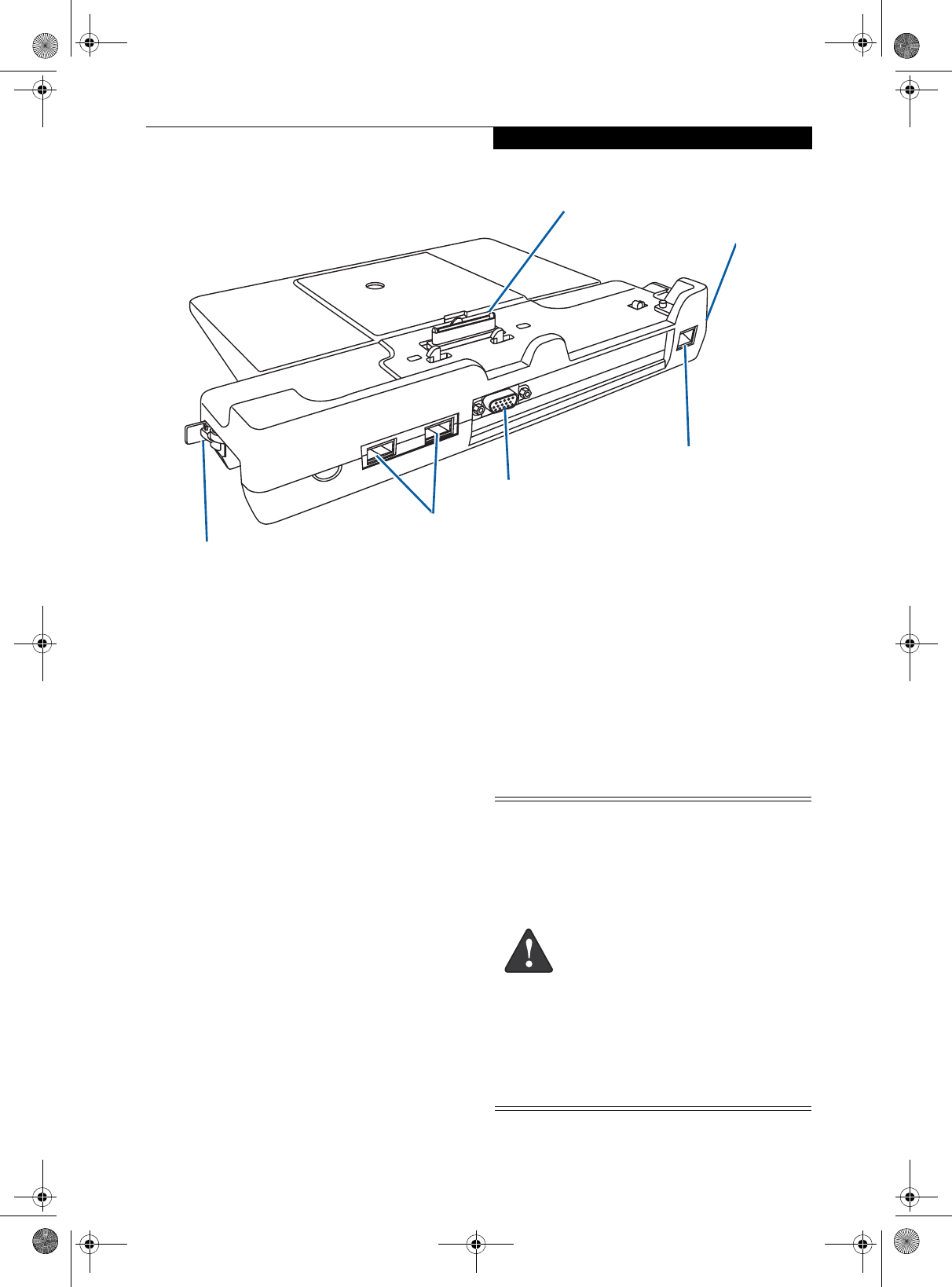
45
User-Installable Features
Figure 4-7. Port Replicator rear panel
Port Replicator
An optional Port Replicator is available from Fujitsu to
support your LifeBook P1600 Series notebook. The Port
Replicator extends the functionality of your system by
providing ports to connect USB devices, an external
monitor, external speaker, or a LAN device. The Port
Replicator connects to the bottom of your notebook. See
“Device Ports” on page 47.
PORT REPLICATOR COMPONENTS
Following is a description of the Port Replicator components.
(Figure 4-7)
DC Power Jack
The DC power jack allows you to plug in the AC adapter to
power your notebook and charge the internal Lithium ion
battery.
USB 2.0 Ports (Qty. 2)
Universal Serial Bus (USB) 2.0 ports allow you to connect USB
devices. USB 2.0 ports are backward-compatible with USB 1.1
devices.
External Monitor Port
The external monitor port allows you to connect an external
VGA or SVGA monitor. Note that if a Port Replicator is
attached, you must use the external monitor port on the Port
Replicator, not the one on your system.
LAN (RJ-45) Jack
The LAN jack allows you to connect a LAN to the Port Repli-
cator. Note that when the system is attached to the Port Repli-
cator, the LAN Jack on the Port Replicator should be used, not
the one on the system.
Docking Port
The docking port connects the Port Replicator to your Life-
Book notebook.
Port Replicator Release Latch
Pull the Port Replicator Release latch away from the Port Repli-
cator to remove the Port Replicator from your notebook.
LAN (RJ-45) Jack
DC Power Jack
USB Ports
External Monitor Port
Port Replicator Release Latch
Docking Port
■
The system contains components that
can be severely damaged by electro-
static discharge (ESD). To minimize risk
to the components, observe the
following precautions:
■
Before docking or undocking your
LifeBook notebook (when using a port
replicator), it is a good practice to
always touch a grounded metal object
to discharge static electricity built up
in your body.
■
Be sure to power down your system
before adding or removing system
components. Even if the system is in
hibernate or standby states, data
could be lost or memory could be
damaged if power is still available to
the system.
P Series.book Page 45 Monday, October 9, 2006 10:58 AM


















